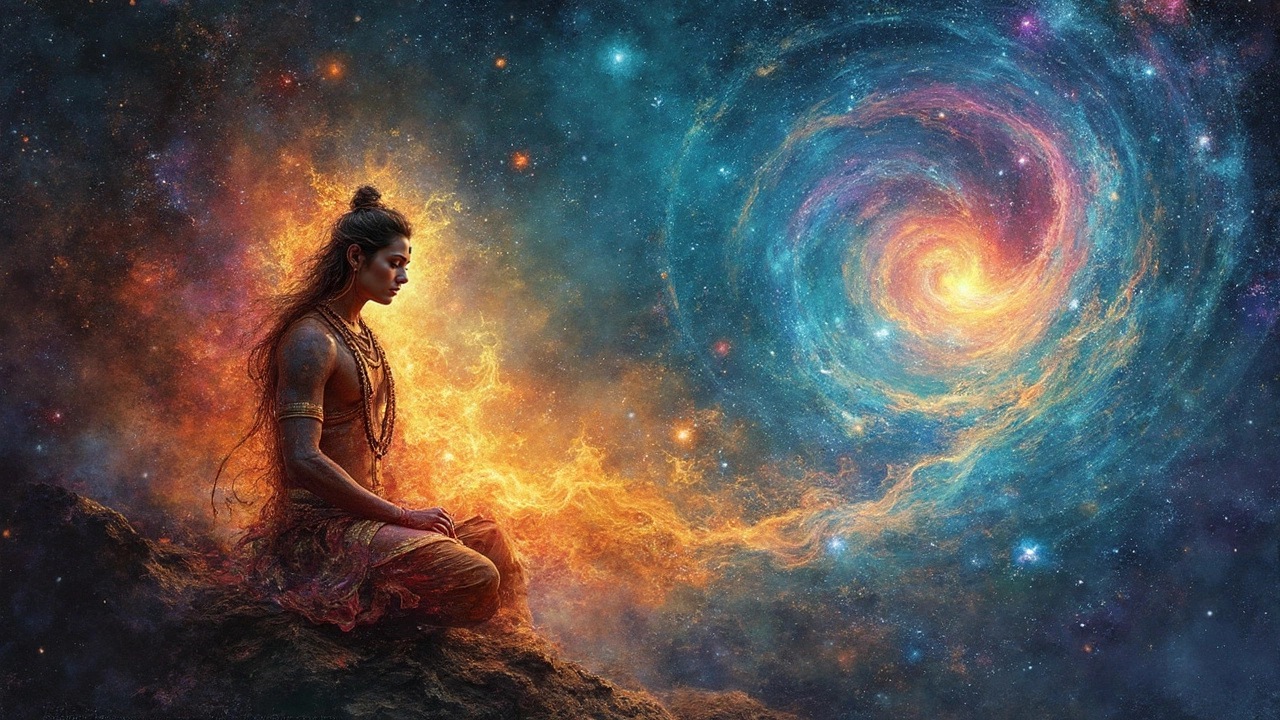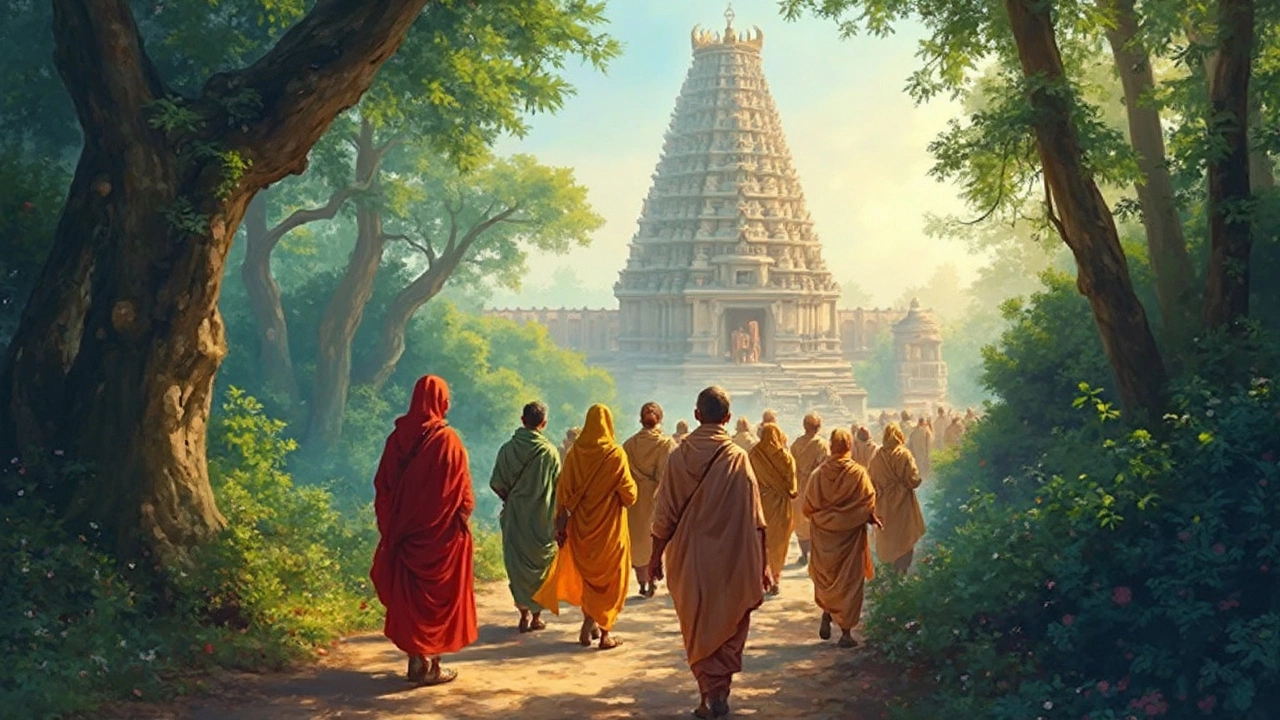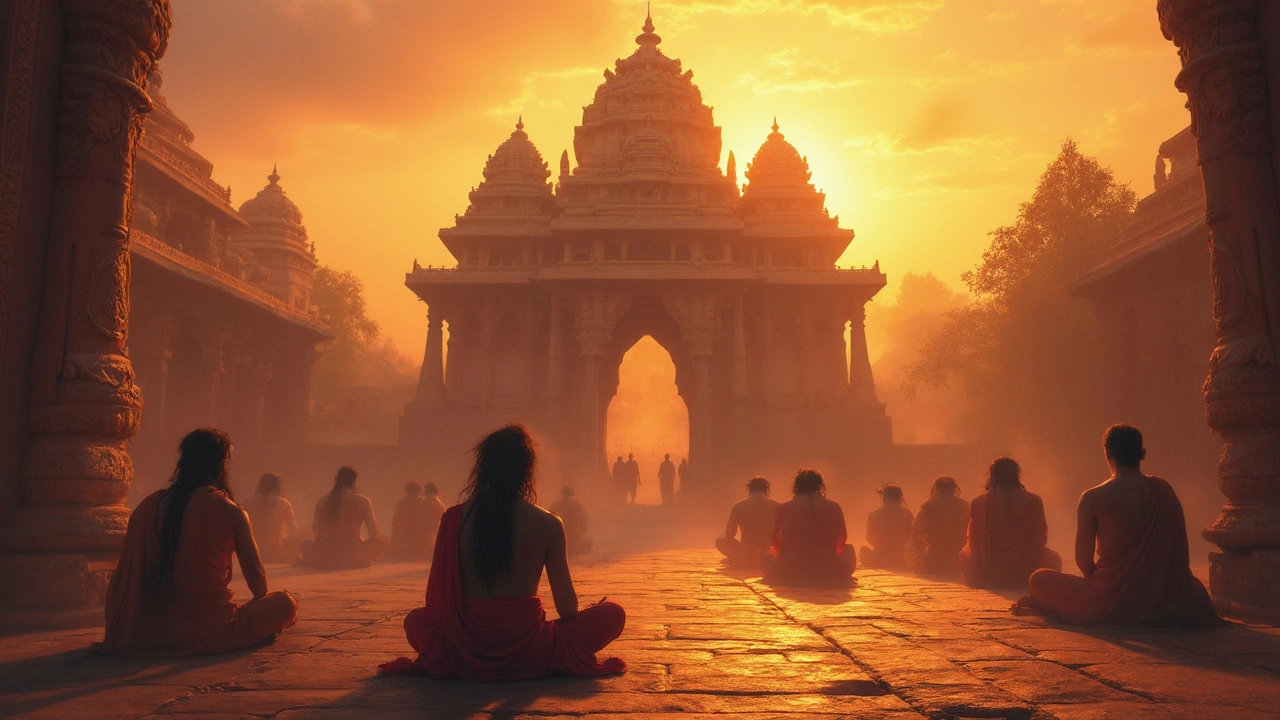Have you ever wondered which religion first graced our planet? While it's a topic of endless debates, there's compelling evidence pointing towards Hinduism as one of the oldest known religions. Originating in the Indian subcontinent, its roots date back over 4,000 years, making it a fascinating subject for anyone interested in history and spirituality.
Now, why does this matter, especially if you're considering a temple tour in India? Well, diving into Hinduism's origins can transform a simple visit into a rich tapestry of historical enlightenment. Imagine standing in a temple that has witnessed centuries of worship. Each stone tells stories of devotion and ancient rituals, making your experience much more meaningful.
Hinduism revolves around a set of core beliefs, including the ideas of karma and dharma. Understanding these principles not only gives insights into Hindu practices but also sheds light on how they have subtly woven into various cultures worldwide. If you're curious about how these concepts play out in daily life, temple tours offer a front-row seat to living traditions that have stood the test of time.
- Tracing the Roots: The Dawn of Religion
- Core Beliefs and Practices
- Influence on Modern Religions
- Temples in India: Living Relics
- Experiencing the Spiritual Legacy
Tracing the Roots: The Dawn of Religion
When we talk about the oldest religion, it's like opening a window into ancient human civilization. Hinduism, often cited as one of the earliest religions, emerged around 1500 BCE. It developed alongside the Indus Valley Civilization which was thriving in what is now modern-day India and Pakistan.
Hinduism didn't have a single founder or a specific starting point. Instead, it evolved from a mix of cultures, ideas, and practices. Unlike religions with a clear-cut beginning, Hinduism is more a collection of beliefs and practices honed over millennia.
Indus Valley's Contribution
Archaeological discoveries have revealed deep connections between the Indus Valley Civilization and later religious texts. For example, remnants of yoga-like postures found in ancient seals suggest the practice's ancient roots. Scholars believe these might be precursors to some of India’s sacred texts, the Vedas—vast collections of hymns, prayers, and rituals that form the foundation of Hindu religious practice today.
An Evolutionary Path
As different groups mingled and shared practices, Hinduism absorbed diverse elements, becoming a rich tapestry of philosophies and rituals. The introduction of the Vedas paved the way for complex ritualistic ceremonies, while later texts like the Upanishads expanded on philosophical ideas.
This ongoing evolution didn't occur in isolation, as influences often crossed paths with other cultures. The core strength of Hinduism lies in its ability to preserve ancient traditions while adapting to changing times.
It's fascinating to consider how an ancient belief system, shaped by varied influences, remains vital. Understanding its multifaceted history gives us a richer perspective when visiting ancient temples and exploring the rituals still practiced today.
Core Beliefs and Practices
At the heart of Hinduism, often recognized as the oldest religion, lies a rich tapestry of beliefs and traditions that have been followed for thousands of years. Two major tenets stand out: karma, the law of cause and effect, and dharma, the duty or moral order. These concepts mold how millions live their lives, influencing their actions and decisions daily.
Karma: The Spiritual Boomerang
Karma is often described as the universe's way of keeping score. It's the idea that good deeds lead to positive outcomes and bad deeds yield negative consequences. This belief isn't just reserved for this lifetime but carries over to future ones, giving a broader perspective on actions and their implications. It's a way of recognizing that every action, no matter how small, counts.
Dharma: The Balance of Duty
Dharma revolves around the notion of living life in harmony with universal laws. It's about doing the right thing, at the right time, and for the right reason. This principle helps individuals find their path in life, encouraging them to fulfill their roles within society. Whether it's a student, teacher, or parent, each role comes with its own set of duties and responsibilities.
Influence on Daily Rituals
Many Hindus begin the day with prayers and meditation, practices aimed at aligning with these core philosophies. Visiting temples, fasting, and observing festivals throughout the year are other ways these beliefs find expression in daily life.
Moreover, these core beliefs have found echoes in modern spirituality across various cultures. Concepts similar to karma and dharma appear in several religions and philosophies, influencing everything from ethical practices to holistic lifestyles.
| Belief | Influence |
|---|---|
| Karma | Encourages ethical actions and long-term thinking |
| Dharma | Guides roles and responsibilities in society |
By understanding these core beliefs, you'll appreciate why temple tours in India aren't just about sightseeing. They offer a chance to witness a living spiritual tradition that's shaped human thought for millennia. Whether you're hearing the chanting of ancient hymns or witnessing a traditional puja ceremony, each experience is a window into how these profound beliefs guide a way of life intertwined with the religion history.

Influence on Modern Religions
When we think about the roots of modern religions, it's amazing how much they've borrowed from ancient ones like Hinduism. Have you ever noticed some similar themes across different faiths? The shared features are not just coincidence; they have deep historical reasons behind them.
Take karma, for instance—a concept that’s widespread today. This idea of cause and effect started in Hinduism and spread to other religions like Buddhism and Jainism. It’s about the belief that your actions impact your future, both in this life and the next. This philosophy has adapted in different ways, but the core remains the same.
Sharing Philosophies
Another biggie is the notion of reincarnation. While not every modern religion embraces this idea, you see shades of it in interpretations of the afterlife. Even if they don’t talk about rebirth specifically, many religions explore life’s continuity, which feels quite similar.
Monotheistic religions have also seen some influence. The oneness and diverse manifestations of God in Hindu philosophy have parallels in how God is conceived in Christianity, Islam, and Judaism, albeit with their unique interpretations.
Impact on Cultural Practices
Beyond spiritual beliefs, Hinduism has impacted cultural rituals too. Yoga, meditation, and vegetarianism, often associated with Hindu lifestyles, have now become global trends. They're no longer seen purely as religious practices but as lifestyle choices for health and wellness.
Even the way festivals are celebrated bears a striking resemblance across different regions. Festivals like Diwali have influenced holiday traditions beyond India, like lighting candles or fireworks in other cultural festivities.
This interconnectedness highlights the significant role religions can play in shaping each other, showing us that our spiritual lives are more connected than we might assume.
Temples in India: Living Relics
Wandering through India's temples, you can truly grasp why it's called the birthplace of one of the oldest religions in the world. These sacred sites are not just architectural marvels; they house centuries of stories, traditions, and beliefs. From the towering gopurams of Tamil Nadu to the serene banks of the Ganges, each temple serves as a living testament to ancient ways of worship.
The Majestic Brihadeeswarar Temple
Take the Brihadeeswarar Temple in Tamil Nadu, for instance. This thousand-year-old site, also known as the 'Big Temple,' stands as a superb example of ancient Indian architecture. Constructed during the Chola dynasty, it's not just an architectural wonder but also a center of ancient cultural practice. Walking through its grand corridors, the magnificence of ancient beliefs is palpable.
The Timeless Charms of Varanasi
In the North, Varanasi offers another spiritual journey. Known as one of the holiest cities in Hinduism, its narrow lanes and ghats teem with pilgrims performing rituals that have remained unchanged for centuries. Whether you're a believer or an observer, experiencing aarti on the banks of the Ganges is a memory that sticks with you.
Unique Experiences and Modern Pilgrimages
The beauty of exploring these temples in India lies in the unique experiences they offer. Whether it's witnessing a traditional dance in a Kerala temple or tasting prasadam in Karnataka, each visit enriches your understanding of how these ancient practices shape modern-day faith. Temple tours are not just about looking—they're about feeling the living pulse of history.
Planning a tour? Consider timing your visit with local festivals for a full immersion into the grandeur of India's cultural kaleidoscope. Maps and guides can help, but locals often know the best times to visit to avoid crowds and enjoy peace.

Experiencing the Spiritual Legacy
When it comes to immersing yourself in the ancient world of religions, there's no better place than the temples of India. These aren't just architectural marvels but living spaces where the oldest traditions continue to thrive. Curious how to truly experience this spiritual legacy? Let's break it down.
Temple Tours: A Journey Through Time
Stepping into a temple like the Brihadeeswarar in Tamil Nadu or Varanasi's Kashi Vishwanath is like traveling back through centuries of religion history. As your eyes catch the intricate carvings and your nose takes in the scent of incense, you're not just a visitor; you're practically a time traveler.
Participate in Rituals
Many temple tours offer you a chance to participate in daily rituals. It's one thing to watch, but joining in a prayer ceremony can be transformative, giving insights into beliefs like karma and how it influences actions. If you're uncomfortable jumping in unprepared, many tour guides offer brief introductions to these practices.
Understanding Sacred Texts
If reading is more your speed, there's plenty to dive into. The Vedas and Upanishads, written in ancient Sanskrit, lay the framework for Hinduism's core tenets. Finding a good translation in a local bookstore or library can add layers to your understanding.
Connect with Local Guides
Opt for guides who are skilled narrators of ancient beliefs. They'll provide context that transforms a pile of stones into stories of gods and creation myths. Not only will you gain insights into the oldest religion, but you’ll also understand its broader impact on communities and even modern lifestyles.
| Temple | Location | Year Built |
|---|---|---|
| Konark Sun Temple | Odisha | 1250 AD |
| Akshardham | Delhi | 2005 |
| Khajuraho Temples | Madhya Pradesh | 950-1050 AD |
Each of these experiences generates memories that linger long after the trip. These Sacred sites and their long-standing traditions act as bridges connecting the past to our modern world. So, pack your curiosity and a willingness to learn, and you're guaranteed an adventure into a spiritual legacy like no other.
